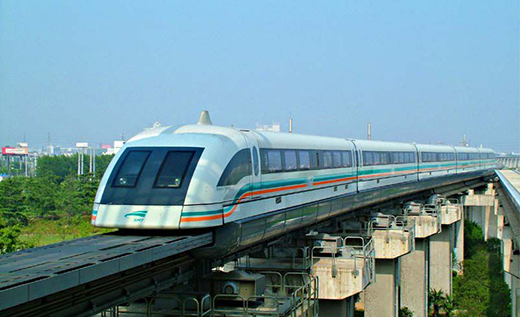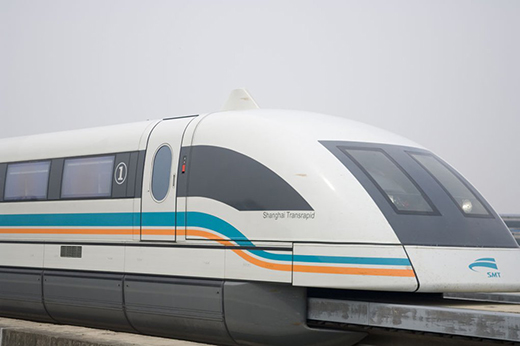


Chinese train manufacturer CRRC Corporation announced that it will begin construction of a new maglev railway, which will allow trains to travel at up to 600 kilometers per hour.
The first prototype is expected to be delivered in 2020, and the test track will be built in Shandong province.
Based on electromagnetic induction, maglev trains are suspended over railway tracks. Thanks to the consequent reduced friction, the travelling speed of maglev trains is twice that of the fastest high-speed train, and close to that of airplanes.

Germany, Japan and the U.S. started to develop maglev transport system in the 1970s, with the aim of improving the capacity and efficiency of their public transport. In 1990, China's Railway Bureau proposed the construction of a Beijing-Shanghai high-speed railway. However, debate raged for seven years about whether the railway should utilize maglev or wheel-rail technology. The latter was ultimately adopted by the State Council in 2004.
Since then, China’s wheel-rail technology has remained at the center of the railway industry. However, when a mid-speed maglev railway in Changsha opened to traffic in May, maglev technology returned to the spotlight. Additionally, a mid-speed maglev line in Beijing, linking the Shijingshan and Mentougou districts, is currently under construction.
As for radiation caused by maglev rails, which is of great concern to the public, Xie Hailin, manager of the maglev branch of CRRC Corporation, explained that electromagnetic radiation inside maglev train carriages is subject to the same limits as radiation in underground carriages. At the same time, compared with underground railways, mid-speed maglev trains consume less energy, cost less, and can be constructed more quickly.
The first high-speed maglev railway opened for business in Shanghai in 2003. The Shanghai line shortens the travel time between Pudong International Airport and Shanghai's central business district to just 13 minutes.
 Fire brigade in Shanghai holds group wedding
Fire brigade in Shanghai holds group wedding Tourists enjoy ice sculptures in Datan Town, north China
Tourists enjoy ice sculptures in Datan Town, north China Sunset scenery of Dayan Pagoda in Xi'an
Sunset scenery of Dayan Pagoda in Xi'an Tourists have fun at scenic spot in Nanlong Town, NW China
Tourists have fun at scenic spot in Nanlong Town, NW China Harbin attracts tourists by making best use of ice in winter
Harbin attracts tourists by making best use of ice in winter In pics: FIS Alpine Ski Women's World Cup Slalom
In pics: FIS Alpine Ski Women's World Cup Slalom Black-necked cranes rest at reservoir in Lhunzhub County, Lhasa
Black-necked cranes rest at reservoir in Lhunzhub County, Lhasa China's FAST telescope will be available to foreign scientists in April
China's FAST telescope will be available to foreign scientists in April "She power" plays indispensable role in poverty alleviation
"She power" plays indispensable role in poverty alleviation Top 10 world news events of People's Daily in 2020
Top 10 world news events of People's Daily in 2020 Top 10 China news events of People's Daily in 2020
Top 10 China news events of People's Daily in 2020 Top 10 media buzzwords of 2020
Top 10 media buzzwords of 2020 Year-ender:10 major tourism stories of 2020
Year-ender:10 major tourism stories of 2020 No interference in Venezuelan issues
No interference in Venezuelan issues
 Biz prepares for trade spat
Biz prepares for trade spat
 Broadcasting Continent
Broadcasting Continent Australia wins Chinese CEOs as US loses
Australia wins Chinese CEOs as US loses